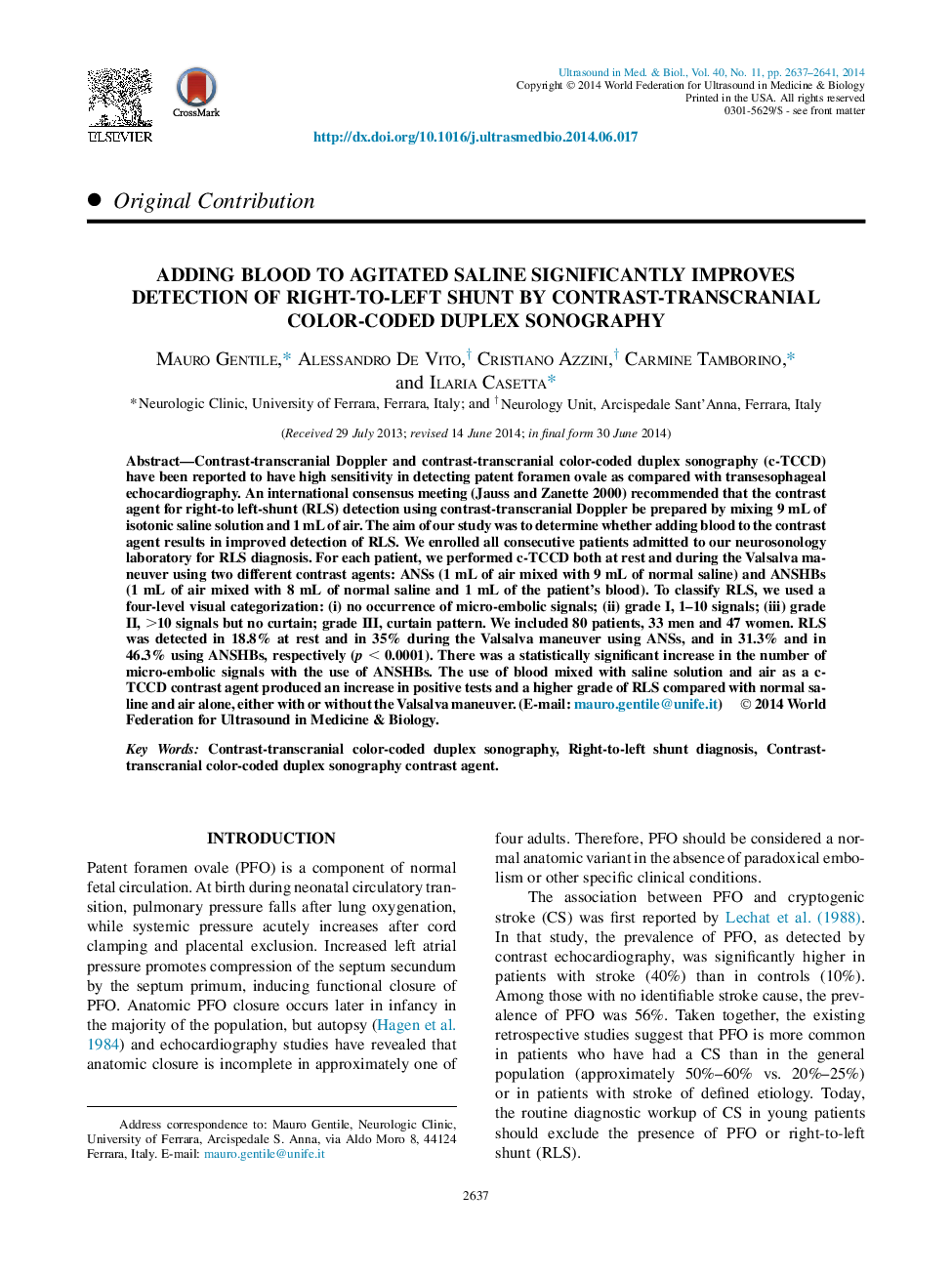| کد مقاله | کد نشریه | سال انتشار | مقاله انگلیسی | نسخه تمام متن |
|---|---|---|---|---|
| 10691526 | 1019600 | 2014 | 5 صفحه PDF | دانلود رایگان |
عنوان انگلیسی مقاله ISI
Adding Blood to Agitated Saline Significantly Improves Detection of Right-to-Left Shunt by Contrast-Transcranial Color-Coded Duplex Sonography
ترجمه فارسی عنوان
اضافه کردن خون به محلول آغشته به طور قابل ملاحظه ای تشخیص شنت راست به چپ را با سونوگرافی دوطرفه رنگی ترانس کرانانی رنگ
دانلود مقاله + سفارش ترجمه
دانلود مقاله ISI انگلیسی
رایگان برای ایرانیان
کلمات کلیدی
سونوگرافی دوطرفه رنگی متعارف ترانس کرانالی، تشخیص شانت راست به سمت چپ، کنتراست ترانس کرانالی رنگ کنتراست سونوگرافی داپلکس کنتراست،
موضوعات مرتبط
مهندسی و علوم پایه
فیزیک و نجوم
آکوستیک و فرا صوت
چکیده انگلیسی
Contrast-transcranial Doppler and contrast-transcranial color-coded duplex sonography (c-TCCD) have been reported to have high sensitivity in detecting patent foramen ovale as compared with transesophageal echocardiography. An international consensus meeting (Jauss and Zanette 2000) recommended that the contrast agent for right-to left-shunt (RLS) detection using contrast-transcranial Doppler be prepared by mixing 9 mL of isotonic saline solution and 1 mL of air. The aim of our study was to determine whether adding blood to the contrast agent results in improved detection of RLS. We enrolled all consecutive patients admitted to our neurosonology laboratory for RLS diagnosis. For each patient, we performed c-TCCD both at rest and during the Valsalva maneuver using two different contrast agents: ANSs (1 mL of air mixed with 9 mL of normal saline) and ANSHBs (1 mL of air mixed with 8 mL of normal saline and 1 mL of the patient's blood). To classify RLS, we used a four-level visual categorization: (i) no occurrence of micro-embolic signals; (ii) grade I, 1-10 signals; (iii) grade II, >10 signals but no curtain; grade III, curtain pattern. We included 80 patients, 33 men and 47 women. RLS was detected in 18.8% at rest and in 35% during the Valsalva maneuver using ANSs, and in 31.3% and in 46.3% using ANSHBs, respectively (p < 0.0001). There was a statistically significant increase in the number of micro-embolic signals with the use of ANSHBs. The use of blood mixed with saline solution and air as a c-TCCD contrast agent produced an increase in positive tests and a higher grade of RLS compared with normal saline and air alone, either with or without the Valsalva maneuver.
ناشر
Database: Elsevier - ScienceDirect (ساینس دایرکت)
Journal: Ultrasound in Medicine & Biology - Volume 40, Issue 11, November 2014, Pages 2637-2641
Journal: Ultrasound in Medicine & Biology - Volume 40, Issue 11, November 2014, Pages 2637-2641
نویسندگان
Mauro Gentile, Alessandro De Vito, Cristiano Azzini, Carmine Tamborino, Ilaria Casetta,
